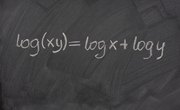
An exponentiated expression is one that contains a base number and an exponent, or "power." A number is said to be "cubed" when it is raised to the 3rd power. For example, 5^3, pronounced "five cubed," is equivalent to multiplying 5 by itself three times -- (5 x 5 x 5) = 125. Roots are inverse operations of exponents. That is, roots "undo" the operation of exponents. Because 5^3 = 125 and a cubed root undoes a cubed exponent, the cubed root of 125 = 5.
Create a cubed expression which contains a base number raised to the power of 3. For example, 5^3 is a cubed expression.
Take the cubed root of the cubed expression. For example, 5^3 becomes (cubed root (5^3)). A simpler way to write the cubed root expression is to raise the base to (1/3). So, (cubed root (5^3)) becomes (5^3)^(1/3).
Drop the exponent from the expression. You are left with only the base of the expression. For example, (5^3)^(1/3) becomes simply 5 because (3 x (1/3)) = 1 and 5^1 = 5.
References
About the Author
Luc Braybury began writing professionally in 2010. He specializes in science and technology writing and has published on various websites. He received his Bachelor of Science in applied physics from Armstrong Atlantic State University in Savannah, Ga.
Photo Credits
BananaStock/BananaStock/Getty Images
